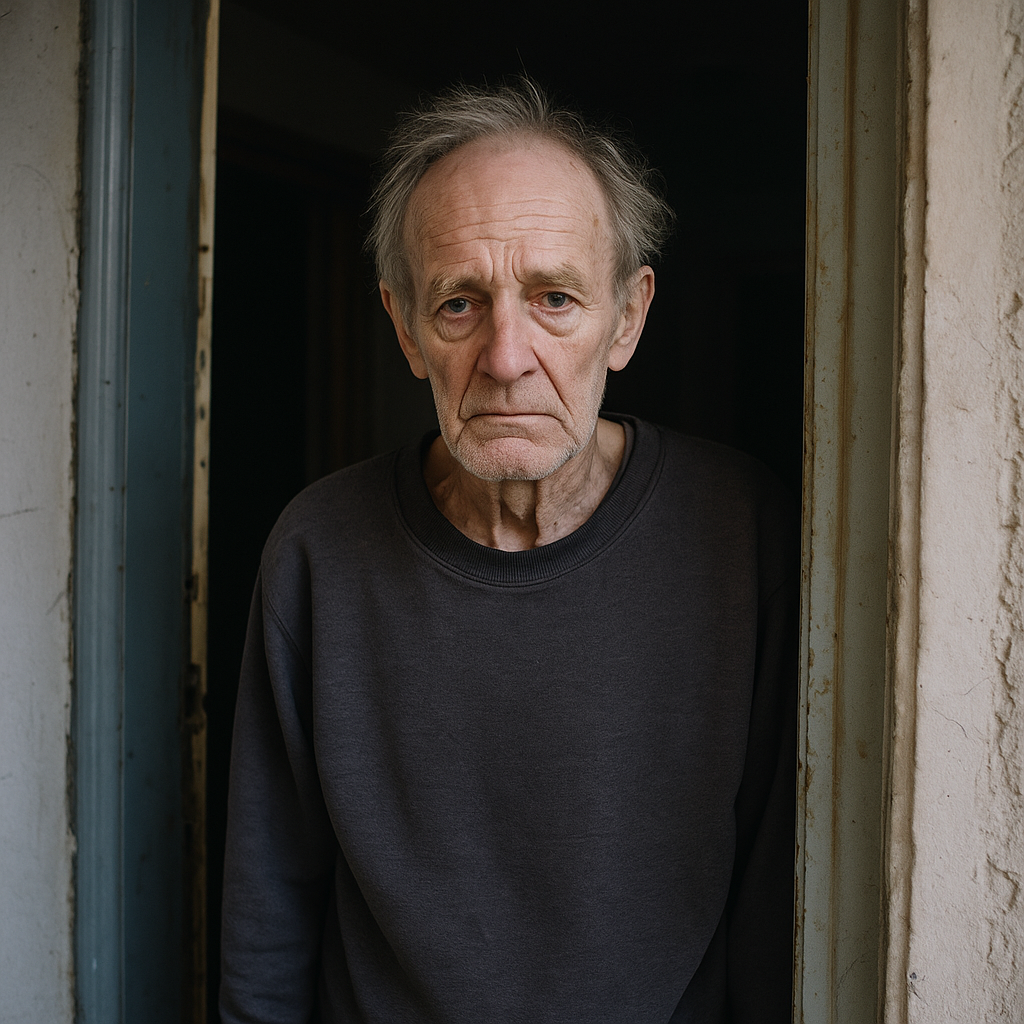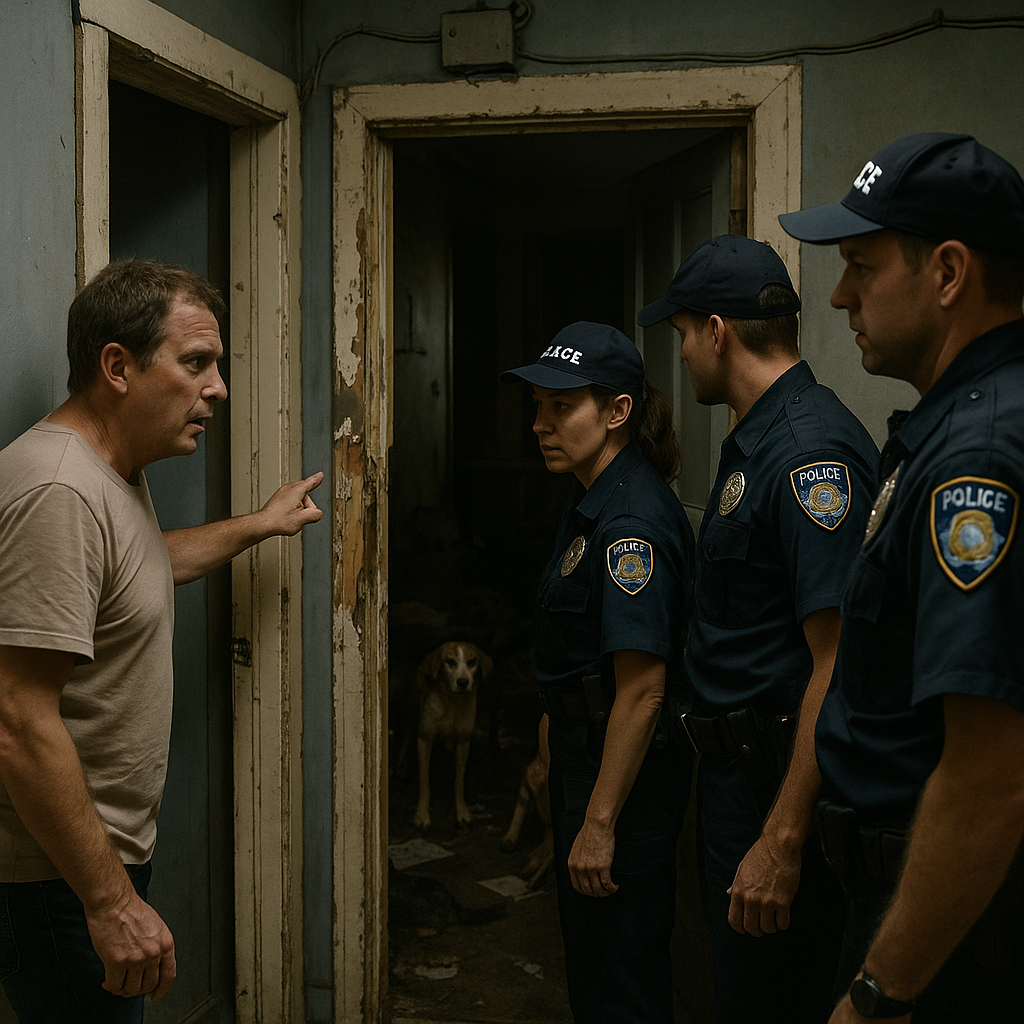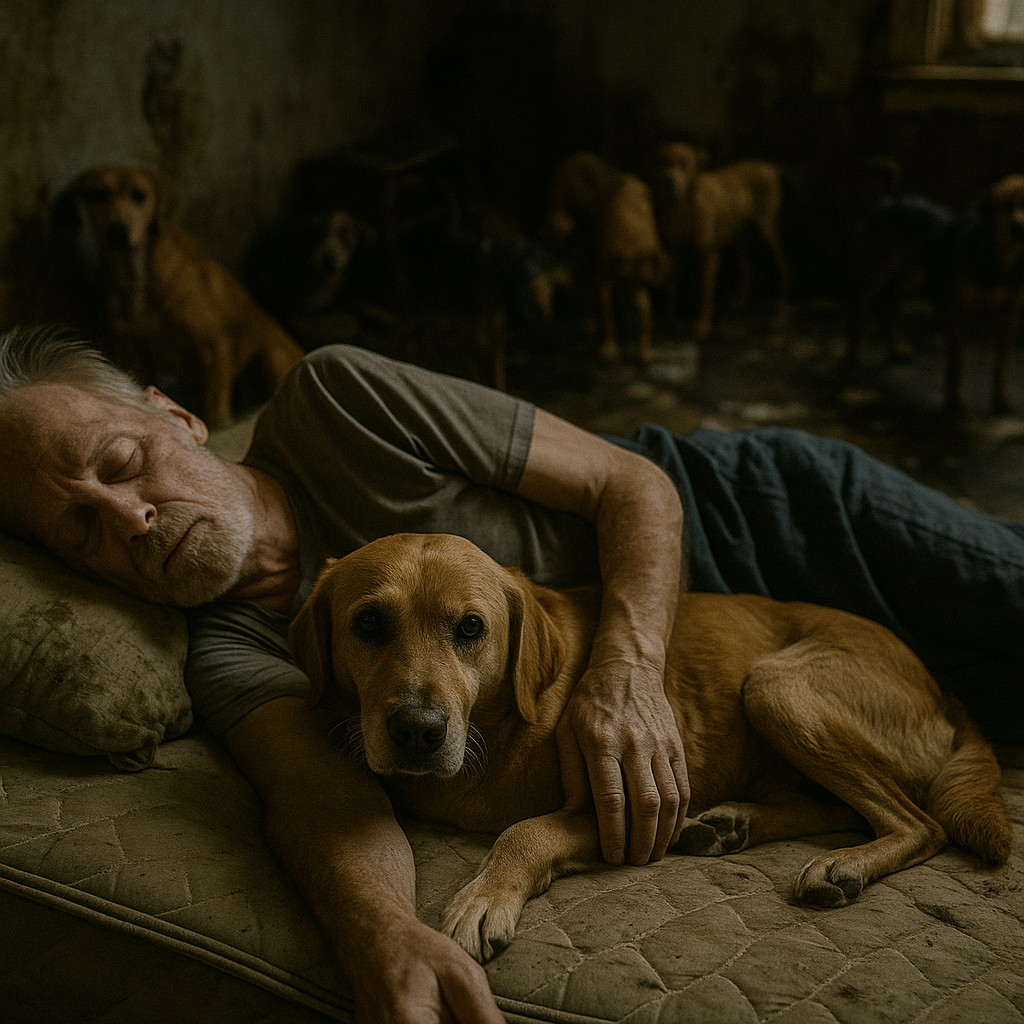In a quiet suburban neighborhood, where most houses had neat lawns and familiar faces waved at one another each morning, there was one apartment that stood apart—not because of its appearance, but because of the man who lived there.
His name was Walter Green, and despite being part of the community for nearly twenty years, few people knew much about him.
He was always polite—he would nod when you passed him in the hallway, and sometimes, if you caught him in the right mood, he might offer a faint smile. But that was the extent of it. No small talk. No visits. No invitations.
He lived alone on the third floor of the Willowbrook Apartment Complex, a weathered building with ivy climbing the outer walls and a communal mailbox that buzzed when you opened it. Walter had no known family. No visitors. No deliveries. No hobbies anyone could see.

But what people did notice—what they could not ignore—were the noises.
They started quietly at first. A soft shuffling, the sound of nails tapping against wood. Then came the low whining. At times it was so drawn out and sorrowful that it made people pause mid-step, wondering if they’d heard a human voice in pain. Other times, it was the loud, frenzied scratching at the floorboards or base of the door. One night, someone swore they heard a high-pitched howl that sent shivers down their spine.
Residents tried to be understanding. “He’s old,” they’d say. “Maybe he has a large TV and keeps forgetting to turn it down.” Some even joked that he was watching horror films too loud.
But after a few months, the humor faded. The noises became more erratic, more unsettling.
One neighbor, Linda, a middle-aged mother of two, left a handwritten note under his door: “Dear Mr. Green, we’re worried. Please, if you need help, just say something. Also, the noises are keeping the kids up at night. We’d appreciate it if you could lower the volume.”
There was no reply.
Another neighbor, Jared, tried knocking one afternoon. Walter opened the door only a crack. His face was pale, his eyes shadowed. Jared tried to ask if he was okay, but Walter just muttered something unintelligible and gently closed the door again.
By now, the theories began circulating.
“He’s got mental health issues,” someone whispered.
“I think he’s hiding someone—or something,” said another.
“Could be a hoarding situation. I bet he’s keeping animals. Maybe illegally.”
Despite the speculation, no one could prove anything. Walter’s apartment remained locked. His blinds were always drawn. And every time the noises grew worse, someone would complain, but nothing changed.
Then, one week in late November, everything shifted.
It started with silence.
No one saw Walter come and go. No sounds. No footsteps above. No strange screeches at 3 a.m.
For some, it was a relief.
But on the third night of silence, the sounds returned—and they were worse.
Gnashing. Scratching. Long, desperate howls that carried down the hallway and seeped through the floorboards.
“It sounded like something was trying to claw its way out,” Linda later said, her voice trembling.
On the seventh day, Jared and another neighbor, Marco, couldn’t take it anymore. They banged on Walter’s door. No answer.
They knocked again—harder. Still nothing.
That’s when they called the police.

When the officers arrived and unlocked the door, what they discovered left even the most seasoned among them shaken.
The apartment was dark and humid. A pungent odor—like something decaying—filled the air. Furniture was overturned, wallpaper peeled, and the floor was littered with shredded blankets and cardboard scraps.
But that wasn’t the shock.
What truly stopped everyone in their tracks were the dogs.
Eighteen of them.
Some barked feebly. Some limped toward the open door, their ribs visible beneath patchy fur. Others didn’t move at all—curled up in corners or huddled together beneath the kitchen table.
And there, in the center of the chaos, lying still on an old mattress, was Walter.
His eyes were closed, hands gently resting on his chest, as if in sleep. But he was gone.
The coroner would later confirm he had passed away peacefully in his sleep—likely from natural causes—six days earlier.
But the dogs had remained. Hungry. Terrified. Waiting.

The apartment was not a house of horror. It was a sanctuary—one Walter had carefully, quietly created over years. The scratches on the walls? From playful or panicked dogs. The howling? From animals who had lost the only person who loved them.
Walter had been rescuing strays.
Not just a few. Dozens over the years.
Some were injured. Others had been abandoned in alleys or left on highways. Walter had taken them all in—feeding them with whatever pension he had, sleeping on the floor when the bed became too crowded, cutting up old blankets for them to nest in.
But he never told anyone. He feared that if people found out, they’d take the dogs away.
And now, without him, the dogs had stayed, not understanding what had happened to their guardian. They had scratched at the door. Cried through the night. Tried to wake him.
And they never left his side.
The news spread like wildfire through the neighborhood.
People who once gossiped about Walter’s odd behavior now stood on the sidewalk in silence, guilt hanging in the air like smoke.
Some cried. Others offered to help.
Linda organized a donation drive that same week. Blankets, dog food, crates, and cash donations poured in. A local animal rescue group stepped up, sending in a team to evaluate and care for the dogs. Miraculously, all eighteen survived.
One golden retriever—whom neighbors later named Shadow—refused to leave the apartment for two days. He had been curled up beside Walter’s bed and had to be gently carried out.
But Walter’s story didn’t end there.

A volunteer from the rescue group found a small locked box under his bed. Inside were handwritten notes, vet records, and a list of every dog he had taken in—with their names, ages, medical issues, and even their favorite toys.
On one folded sheet, dated years earlier, he had written:
“If something ever happens to me, please don’t blame the dogs. They only know love. I took them in because no one else would. I hope someone will do the same for them when I’m gone.”
That note was framed and now hangs in the local shelter’s adoption room.
Each of Walter’s dogs found a home. Some were adopted by neighbors. Others by animal lovers who read about the story online. Shadow, the loyal retriever, was taken in by Linda and her two kids.
“He still sleeps by the door,” she says. “As if he’s waiting for Walter to come home.”
Walter was laid to rest in a small ceremony, paid for by the community. Only a handful of people attended, but each brought flowers—and many brought their adopted dogs.
No one talks about Walter Green as the strange old man anymore.
Now, he’s remembered as the man with the quiet heart, who chose to love in silence, and who gave everything he had to creatures who had nothing.
His apartment remains empty to this day. The landlord considered renting it out, but somehow, no one ever follows through. Perhaps it’s the faint scratches still visible on the floor. Or the photo frame on the wall, left by the rescue group, showing Walter smiling faintly with four pups in his lap.
Some say, late at night, they still hear soft paws padding down the hallway. A gentle howl carried by the wind.
But these days, the sounds don’t frighten anyone.
They remind the neighborhood of love, of sacrifice, and of a man they almost never knew.
And they make sure they never forget again.
Moral: Sometimes the people we understand the least are the ones with the biggest hearts. Never assume silence means nothing is happening. Behind closed doors, there may be a story of extraordinary compassion waiting to be told.
